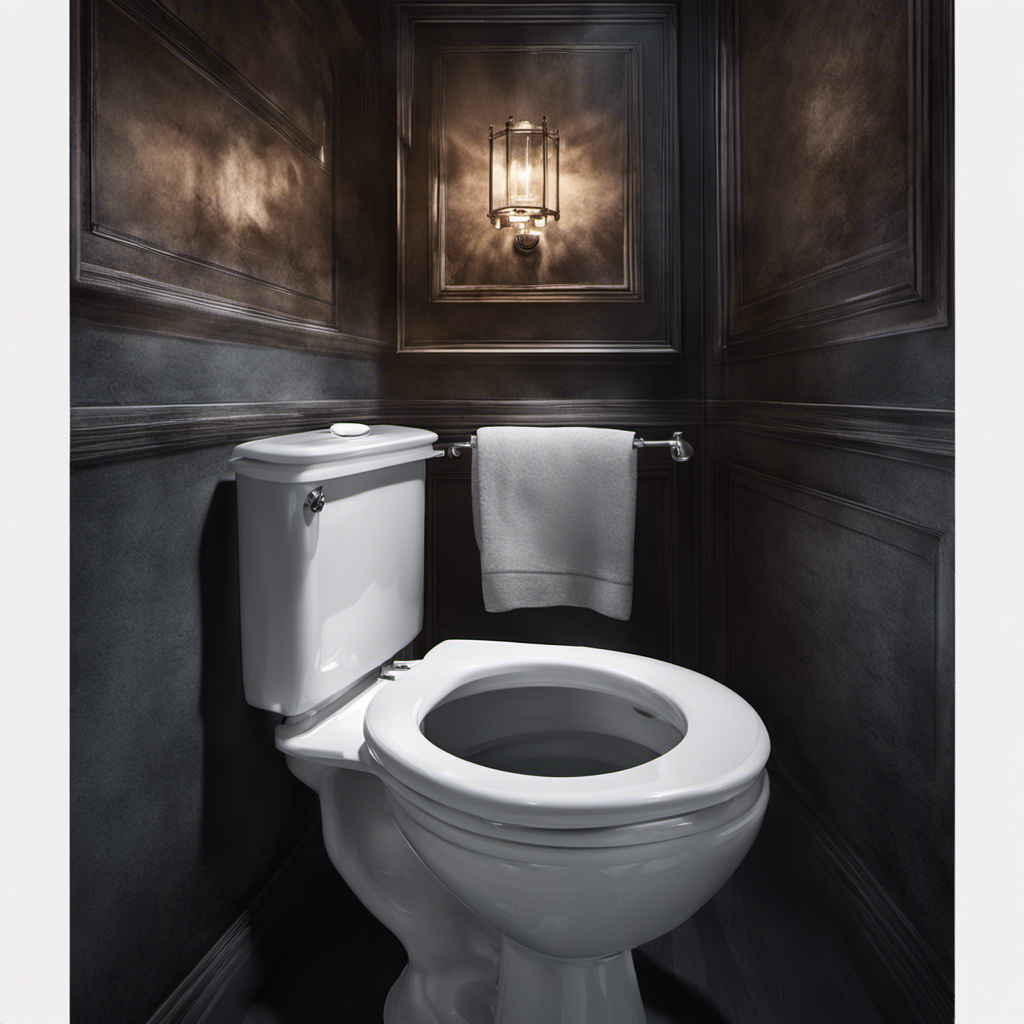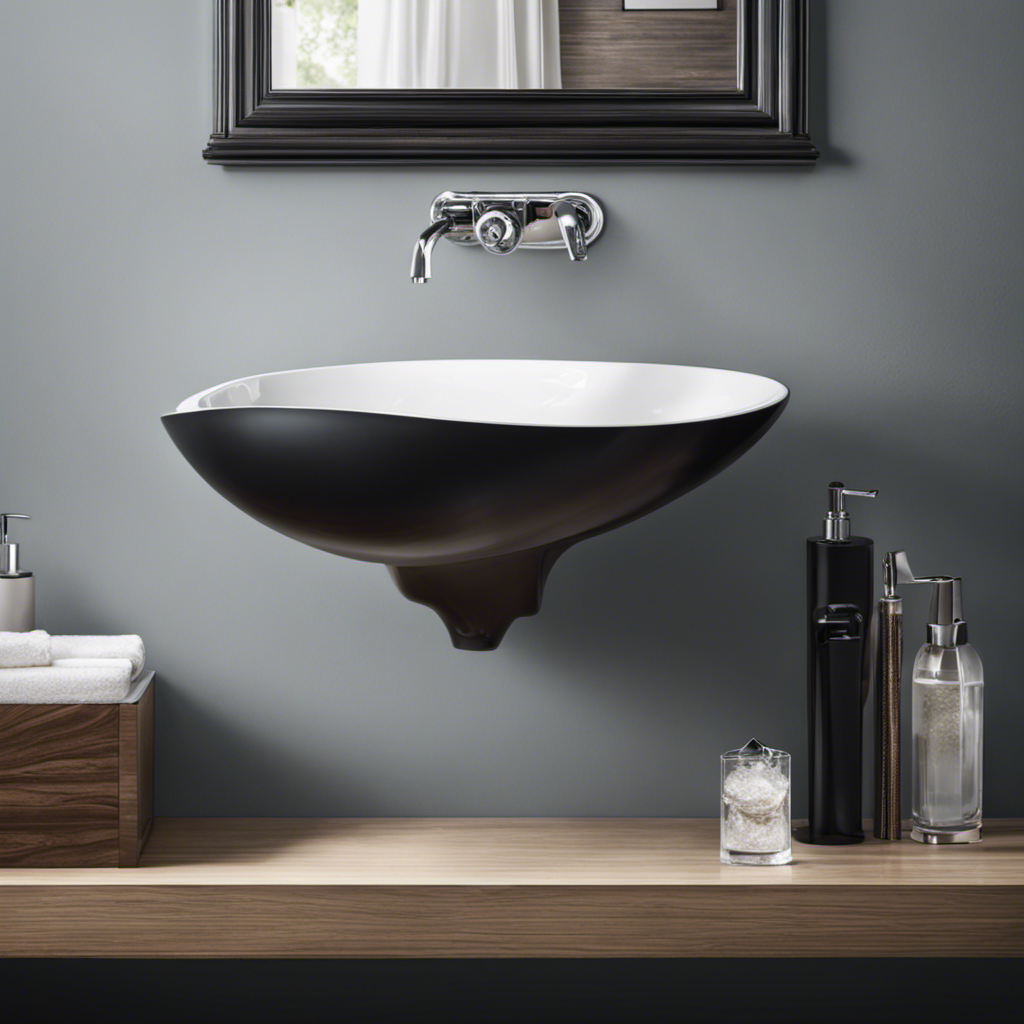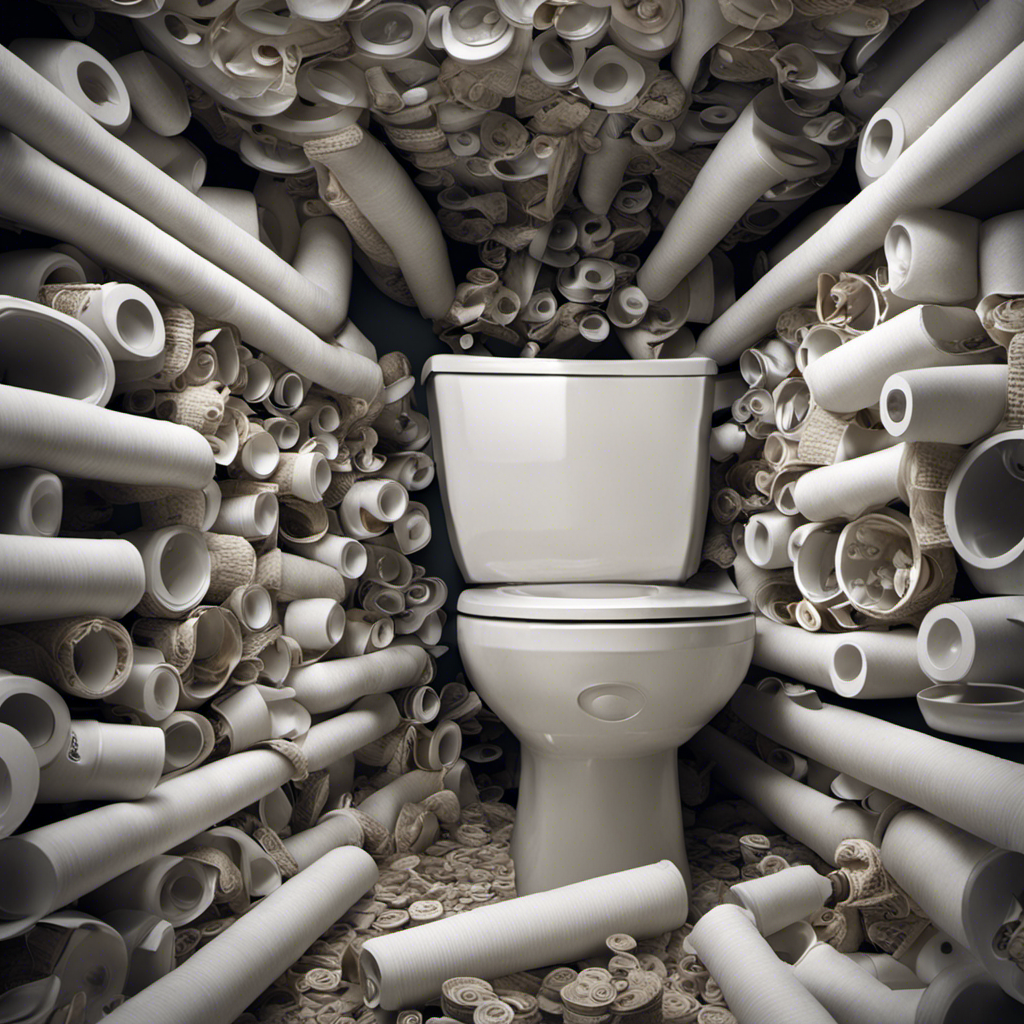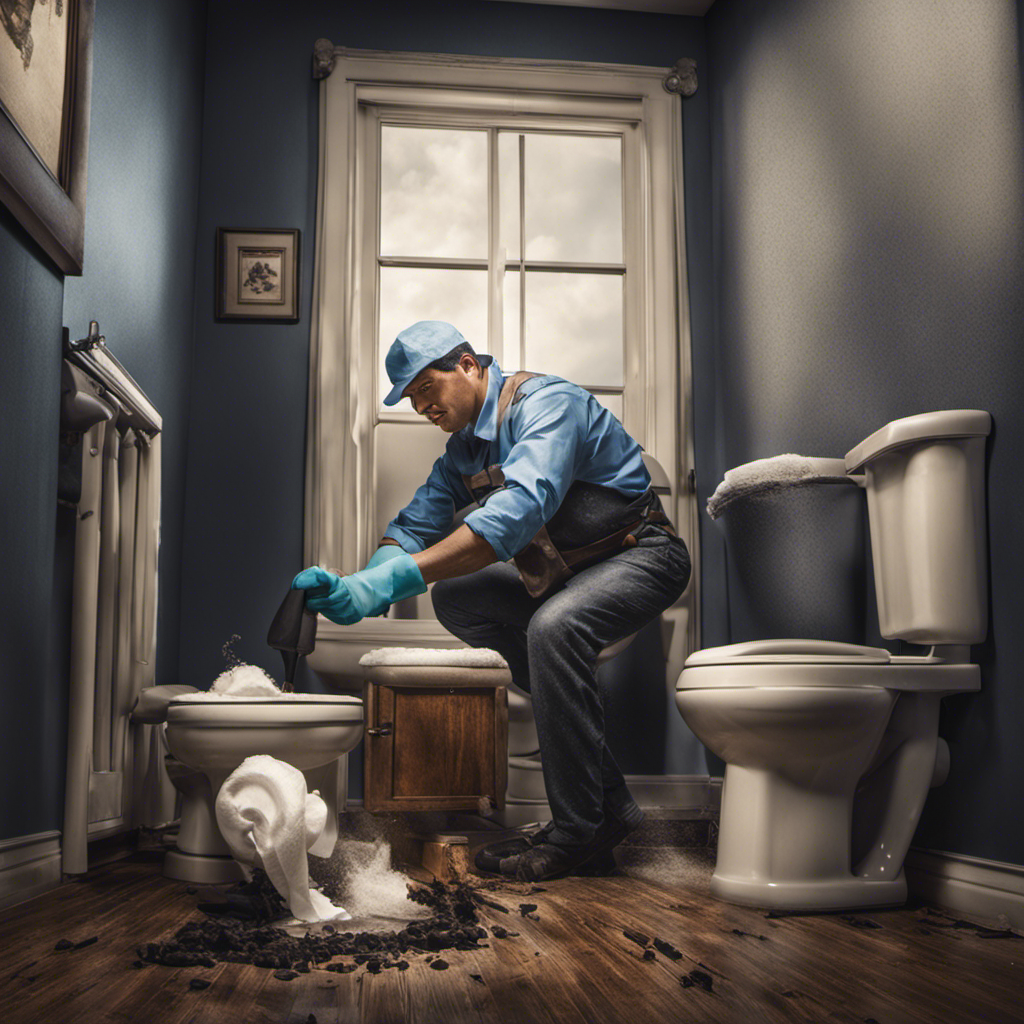Have you ever experienced the baffling phenomenon of your toilet flushing all on its own? It’s as if there’s a mischievous ghost lurking in your bathroom, playing pranks on you. But fear not, dear reader, for I am here to shed light on the reasons behind this mysterious occurrence.
In this article, we will explore the common causes of self-flushing toilets, the role of water pressure and faulty flapper valves, and how to troubleshoot and fix this perplexing issue. So, let’s dive in and unravel the secrets of the self-flushing toilet!
Key Takeaways
- Self-flushing toilets can be caused by a faulty flapper valve that doesn’t seal properly or continuous water leak into the bowl.
- Water pressure and the water level in the tank play a significant role in the force and efficiency of the flush.
- Faulty flapper valves can lead to water leaks and inefficient flushing, requiring regular maintenance and inspection.
- Ghost flushing can have psychological effects on toilet users and undermine water conservation efforts, necessitating troubleshooting and fixing for optimal function.
Common Causes of Self-Flushing Toilets
One common cause of self-flushing toilets is a faulty flapper valve that doesn’t seal properly, causing water to continuously leak into the bowl and trigger an automatic flush. The flapper valve is located inside the toilet tank and is responsible for controlling the flow of water from the tank to the bowl.
When the flapper valve is not functioning correctly, it allows water to escape, leading to a continuous refill and subsequent flush. This issue can be caused by wear and tear over time or a misalignment of the flapper valve.
If you are experiencing self-flushing in your toilet, it is likely due to a problem with the flapper valve and may require plumbing repairs to fix the issue.
How Water Pressure Affects Toilet Flushing
To understand how water pressure affects your toilet flushing, you need to consider the force behind the water flow. The water level in the tank is determined by the amount of water supplied through the water supply line. When you flush the toilet, the water is released from the tank and flows into the bowl.
Here’s how water pressure comes into play:
-
Gravity force: The force of gravity pulls the water down from the tank into the bowl, creating a swirling motion that helps carry away waste.
-
Water level: The water level in the tank affects the force of the flush. A higher water level means more pressure when the water is released, resulting in a stronger flush.
-
Pressure from the supply line: The water pressure in the supply line determines the speed at which the tank refills after a flush. Higher pressure means a quicker refill and shorter wait time.
Understanding how water pressure affects toilet flushing is crucial in troubleshooting any issues with the flushing mechanism.
In the next section, we’ll explore the role of faulty flapper valves in self-flushing toilets.
The Role of Faulty Flapper Valves in Self-Flushing Toilets
The role of faulty flapper valves in self-flushing toilets can lead to water leaks and inefficient flushing. Flapper valves are responsible for controlling the flow of water from the tank into the bowl during a flush. When the flapper valve is functioning properly, it creates a watertight seal that prevents water from continuously flowing into the bowl. However, if the flapper valve is faulty, it may not create a proper seal, allowing water to leak into the bowl and causing the toilet to flush by itself. This can result in wasted water and higher water bills. Additionally, sediment buildup in the flapper valve can further impact its performance, leading to more frequent leaks and inefficient flushing. Regular maintenance and inspection of the flapper valve can help prevent these issues and ensure optimal toilet performance.
| Flapper Valve Issues | Symptoms | Solutions |
|---|---|---|
| Faulty Seal | Water leaks into the bowl, toilet flushes by itself | Replace the flapper valve |
| Sediment buildup | Inefficient flushing, frequent leaks | Clean or replace the flapper valve |
| Misalignment | Water leaks around the flapper valve | Adjust or replace the flapper valve |
| Age and wear | Flapper valve deteriorates over time | Replace the flapper valve |
Understanding the Impact of Ghost Flushing on Toilet Behavior
Understanding how ghost flushing affects toilet behavior is important in preventing water waste and optimizing flushing efficiency. Here are three key points to consider:
-
The psychological effects of ghost flushing on toilet users: When a toilet flushes on its own, it can be unsettling and create feelings of unease or discomfort. This can lead to increased anxiety and a reluctance to use the toilet, especially at night.
-
The impact of water conservation efforts on self-flushing toilets: Self-flushing toilets are designed to conserve water by only flushing when necessary. However, ghost flushing can undermine these efforts by causing unnecessary flushes, resulting in wasted water and increased utility bills.
-
The need for troubleshooting and fixing self-flushing toilets: To address ghost flushing, it is important to identify and resolve any underlying issues with the toilet’s sensors or mechanisms. By doing so, water waste can be minimized, and the toilet can function properly.
Understanding the impact of ghost flushing on toilet behavior sets the stage for troubleshooting and fixing self-flushing toilets.
How to Troubleshoot and Fix a Self-Flushing Toilet
Identifying and resolving issues with a self-flushing toilet’s sensors or mechanisms is essential in troubleshooting and fixing the toilet.
When faced with a self-flushing toilet that flushes by itself, the first step is to check the toilet tank for any plumbing issues. Start by inspecting the flapper valve, which is responsible for sealing the tank and preventing water from flowing into the bowl. If the flapper valve is worn or damaged, it may need to be replaced.
Additionally, check the float mechanism and ensure it is properly adjusted. A float that is too high or too low can cause the toilet to flush unexpectedly.
Lastly, examine the sensors that control the flushing mechanism and clean them if they are dirty or obstructed.
Frequently Asked Questions
Can a Self-Flushing Toilet Be a Sign of a More Serious Plumbing Issue?
A self-flushing toilet can indicate a serious plumbing issue. Common causes include a faulty fill valve or a malfunctioning sensor. If left unresolved, it can lead to water damage, increased water bills, and potential sewage backups.
Is It Safe to Continue Using a Self-Flushing Toilet?
Continuing to use a self-flushing toilet without understanding the potential risks can be dangerous. It’s crucial to prioritize toilet maintenance to prevent any further issues and ensure the safety of your plumbing system.
How Can I Prevent My Toilet From Self-Flushing?
To prevent my toilet from self-flushing, I need to address toilet maintenance. Regularly check the flapper valve, water level, and handle mechanism. If necessary, adjust or replace these components to ensure proper functioning and avoid unexpected toilet flushes.
Will Adjusting the Water Pressure in My Home Solve the Self-Flushing Issue?
Adjusting the water pressure in your home may help troubleshoot the self-flushing issue. By reducing the water pressure, you can potentially prevent sudden surges that trigger the toilet to flush on its own.
Are There Any DIY Methods to Fix a Self-Flushing Toilet Before Calling a Plumber?
When a toilet flushes by itself, there are DIY troubleshooting methods you can try before calling a plumber. Common causes include faulty flapper valves, water pressure issues, or a malfunctioning fill valve.
Conclusion
In conclusion, self-flushing toilets can be caused by a variety of factors. These include water pressure issues and faulty flapper valves. Understanding the phenomenon of ghost flushing is crucial in troubleshooting and fixing this problem.
By addressing these issues, homeowners can regain control over their toilets and ensure efficient and reliable flushing. Don’t let your toilet flush on its own. Take action and restore order to your bathroom.










